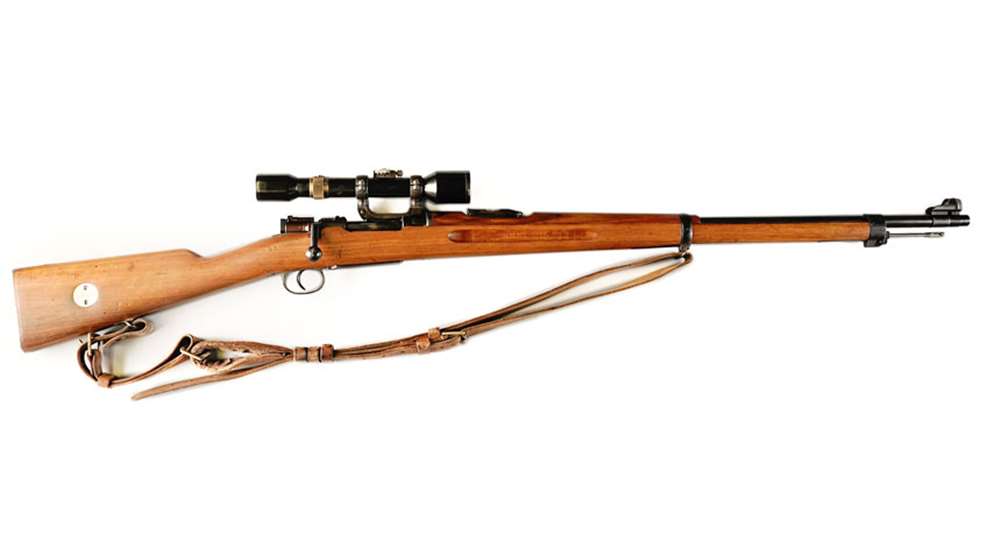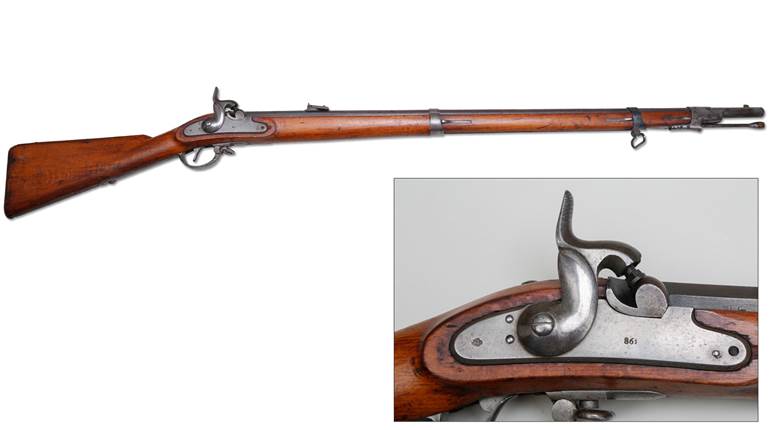
Beginning in 1867, the Swedish military started fielding versions of the single-shot Remington Rolling Block rifle and carbine. In 1887, rifles—originally chambered in 12.7x42 mm R—were converted to the more modern, smallbore 8x58 mm R cartridge. The carbines, however, remained in 12 mm.
At that time, many countries were adopting bolt-action repeaters. Sweden, despite being a neutral nation, was always cognizant of the fact that her arms needed to be at least on par with those used by her neighbors in order to maintain this tenuous position. In 1894, it was decided to arm the Swedish cavalry with a variant of the German 1893 Mauser chambered in 6.5x55 mm.
Some two years later, a rifle employing the same chambering and basically the same mechanics as the carbine was authorized. The Gevär m/96 was initially produced by Mauser in Oberndorf, Germany, though in short order (1898) Sweden took over manufacture of the arms indigenously at Carl Gustafs Stads Gevärsfaktori, where they were made until the 1920s. This resulted in a total output of some 532,000 rifles, not counting the roughly 38,600 built by Mauser—as well as a large quantity of carbines and other specialist variations.
While the action of this superb-quality, small-ring repeater was not as strong as that of later-model Mausers, it was more than adequate to handle the pressures of the 6.5x55 mm round for which it was chambered. Existing guns were assiduously re-built for decades until the complete line was finally taken out of service in the 1960s. Each arm was fitted with a brass stock disk, listing shooting characteristics and bore wear over its issue life.
With the onset of World War II, Sweden decided that it might be best to develop a sniper version of the 1896 rifle. This resulted in the creation and adoption of the Gevär m/41. With the exception of turning down the m/96’s straight bolt and adopting a German Jackenroll base and mount, the m/41 platform itself differed little from the m/96s, maintaining the same chambering, bedding, overall length (49.6") and barrel length (29.2").
The chosen scope for the m/41 was the German 4x90 Ajack—“90” not indicating the size of the objective lens but the degree of the unit’s luminosity. Adolf Hitler, who at the time was trying to keep Sweden in good humor because that country supplied the Third Reich with steel and was in a strategic position vis-à-vis the Soviet Union, agreed to provide the Swedes with some war materiel, including Ajack scopes.
As the war progressed and Germany’s position became more fragile, Hitler decided to re-think his largesse, withdrawing the Ajacks from export, along with other armaments. The Swedes were now forced to rely on somewhat inferior, indigenously manufactured AGA 42 and AGA 44 optics.
During World War II, the m/41 was reckoned to be one of the finest sniper rifles of the period. Still, in 1955 the piece was upgraded and re-designated “m/41b.” Improvements included removing AGA scopes and replacing them with refurbished Ajacks. The rifle’s original scope base was also refined by the addition of a front set screw that prevented the mount from moving forward due to recoil. Mounts and bases were hand-fitted to specific rifles and serial-numbered accordingly.
Older m/96 and m/38 rear sights were exchanged for the more sophisticated Feinvisier SM m/55 model, and the front sight given a higher hood. When not in use, scopes were to be dismounted and carried in special metal containers, also serial numbered to the rifles.
A couple of decades or so ago, a quantity of m/42b sniper rifles was imported into the United States, and sold at a fairly brisk pace. Today these guns are scarce on the collector market—thus, it is hard to find comparables on which to value them. Extrapolating prices found at auction and private sales would indicate that a specimen such as the NRA Excellent-condition m/41b seen here (originally made as an m/96 in 1910), would bring approximately $3,750.
Gun: Gevär m/41b
Manufacturer: Carl Gustafs Stads Gevärsfaktori (Sweden)
Chambering: 6.5x55 mm (Swedish)
Manufactured: 1910 (converted to m/41b c.1955)
Condition: NRA Excellent (Modern Gun Standards)
Value: $3,750



































